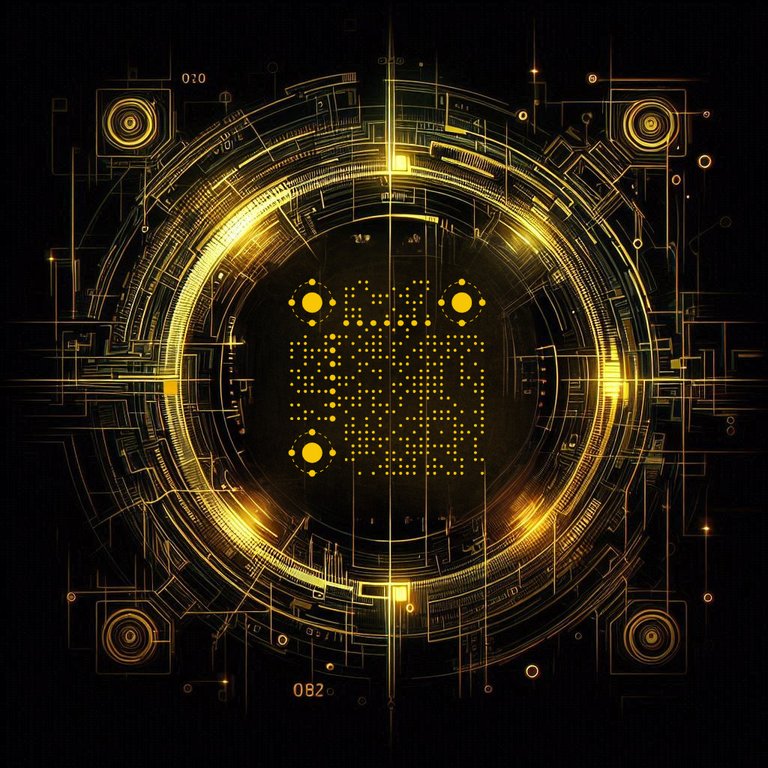Wisst ihr eigentlich, wofür das QR in QR-Code steht?
QR-Codes sind mittlerweile allgegenwärtig und ermöglichen das schnelle visuelle Einscannen von URLs, Telefon-Kontakten oder auch Adressen für Bitcoin-Lightning-Zahlungen.
QR steht übrigens für Quick-Response (Schnelle Reaktion) und wurde bereits 1994 von der japanischen Firma Denso Wave entwickelt. Die Technologie wurde aber erst Jahrzehnte später, eigentlich erst seit Corona, massentauglich.
Früher war es mühsam einen QR-Code einzuscannen, man musste eine eigene, kostenpflichte App oder eine gratis App mit Werbung am Smartphone installieren, um die Codes überhaupt einscannen zu können.
Mittlerweile ist das Scannen aber Bestandteil des Betriebssystems und wurde direkt in die Kamera-App integriert. Man braucht nur noch die Handy-Kamera auf einen QR-Code richten und dieser wird dann gleich automatisch eingescannt. Wie praktisch.
Das Besondere an QR-Codes ist auch, dass sie einen ausgeklügelten Fehler-Korrektur-Mechanismus (Reed-Solomon) verwenden, der auch bei DVDs und Blu-Rays zum Einsatz kommt.
QR-Codes unterstützen 4 Fehler-Korretkur-Stufen und ermöglichen so eine Fehlerrate von 7% bis sogar 30% zu korrigieren.
Das ermöglicht das zuverlässige Auslesen auch unter schwierigen Bedingungen. Man kann sich die Fehlererkennung aber auch künstlerisch zu Nutze machen und QR-Codes ästhetisch leicht verändern (zum Biespiel ein Logo in den QR-Code integrieren), ohne dass man den QR-Code damit zerstört.
Das habe ich ausprobiert und einen QR-Code mittels AI und dem QR-Code-Generator auf design.com generiert.
Könnt ihr ihn auslesen? Wusstet ihr wofür QR steht? Wie oft verwendet ihr QR-Codes und wofür?
Quick-Response Code (QR Code)

Generate QR Codes with a custom design
https://www.design.com/qr-code-generator
English
Do you actually know what the QR in QR code stands for?
QR codes are now ubiquitous and enable the quick visual scanning of URLs, telephone contacts or even addresses for Bitcoin Lightning payments.
Incidentally, QR stands for Quick Response and was developed back in 1994 by the Japanese company Denso Wave. However, the technology only became suitable for mass use decades later, actually only since corona.
Scanning a QR code used to be tedious, in the past you had to install a paid app or a free app with advertising on your smartphone to be able to scan the codes at all.
However, scanning is now part of the operating system and has been integrated directly into the camera app. All you have to do is point your phone camera at a QR code and it will be scanned automatically. How practical.
Another special feature of QR codes is that they use a sophisticated error correction mechanism (Reed-Solomon), which is also used for DVDs and Blu-Rays.
QR codes support 4 levels of error correction, enabling an error rate of 7% to even 30% to be recovered.
This enables reliable reading even under difficult conditions. You can also make artistic use of error detection and slightly modify QR codes aesthetically (e.g. integrate a logo into the QR code) without destroying the QR code.
I tried this out and generated a QR code using AI and the QR code generator on design.com.
Can you read it? Did you know what QR stands for? How often do you use QR codes and for what?
Posted Using InLeo Alpha





